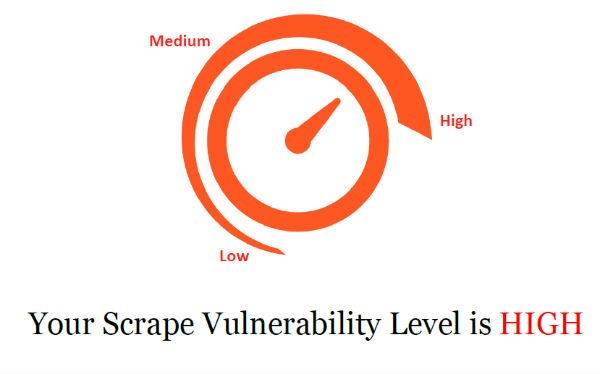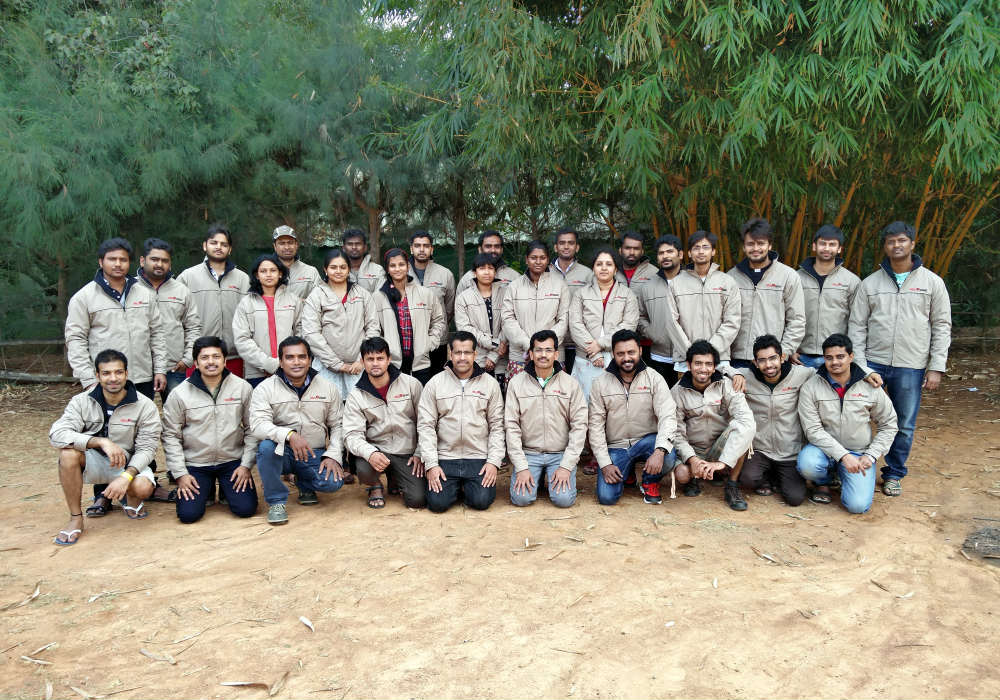In Q1 2016, we saw our hard work payoff. We achieved some notable milestones. We became cash flow positive and our annual revenue rate (ARR) grew by 3 times in 3 months. We expanded our customer base to 68 countries (with over 90% of the revenues from outside our home base), and doubled our team to 50. Our Average Revenue per account (ARPA per year) has doubled to $10,000. Above all, we pushed ourselves to become one of the top 2 bot prevention vendors across the globe!
This is quite an achievement, and I’d want to share some of my learnings on what worked, and how we got there.
Who Are We?
We are ShieldSquare – a startup based out of Bangalore that has come up with a world-class solution to fight bad bots that scrape content, spam forms and engage in various forms of site abuse. We started off in late 2013 with a founding team of five incubated at Microsoft Ventures Accelerator, Bangalore. We worked hard on building the product and refining it by working with early customers till the first half of 2015. We launched ShieldSquare for the global market in mid 2015 and started getting good traction. We decided to shift gears and accelerate the business growth for the year 2016 and this is how we went about doing the same.
Expanding To Outbound Lead Generation Channels
We initially focused on a low-touch approach in getting leads via inbound channels. With the right keywords, and after a lot of optimisation, we became the No.1 in search ads. We started getting a good number of leads, and this also helped us secure a top global financial portal as our customer.
However, as the average deal sizes through the inbound approach were small, we kickstarted our outbound marketing campaigns with aggressive sales targets. We launched personalised email marketing across different verticals, analysed the technologies our prospective customers were using and focused on them. This helped us reach out to the Europe and US markets, and win marquee customers – still keeping it a low-touch approach.
Incentivising Customers To Opt For Longer Duration Plans
We wanted to have a win-win situation for our customers (lower total cost of ownership) and us (cash flow and predictable business growth). We removed monthly subscriptions, and started providing significant discounts to customers that opt for annual subscriptions. Why? Because we believe that the the cash paid today is many more times valuable than the same amount paid after a year. If the valuation of the company increases by 5 times over 12 months, the cash being realised now is 5 times more valuable than the same amount realised after 12 months. We now plan to expand this strategy to incentivise customers that go for 3-year subscriptions.
Then Came The Growth Hacks!
Our regular efforts resulted in regular leads, but we wanted higher conversions with minimal touch. We launched a few growth hacks that are first in this industry, to increase our conversions. Our free-forever diagnosis plan helped our prospects try, and experience our product with no upfront commitments. Our free tools ScrapeScanner and BadBot Analyser provided reports that enabled our prospective customers understand the need for ShieldSquare and prioritise it internally.

Wise Investments To Achieve Growth
One way for businesses to reach positive cash flow is to get the team to work 2 times harder, cut costs, and the like. But our team was already working 2 times harder and our costs were tightly managed. Another way—the more sustainable way—to reach positive cash flow is to grow revenues! We chose this path for becoming cash-flow positive!
- Growing revenues require building solid sales, marketing and product teams, and we invested on growing our teams across functions and bringing in passionate talents to drive these teams.
- There are certain things that might seem unimportant, but rather carry great value. Our employees at Bangalore enjoy free breakfast, lunch and snacks, while the same will be implemented soon for our folks in the Chennai, who are already beating the heat with the free tender coconuts we offer twice a day.
It’s Ok To Say “NO”
In business, priority is everything. 20% of the activities we do contribute to 80% of the results. Here’s how we prioritised things to be more productive:
- We steered our focus away from activities that are of less or no value to our business, like attending feel-good/networking events. Rather, we reached out to our advisors and mentors whenever we needed guidance and advice.
- We have restricted ourselves from meeting prospects until we qualify them. But we keep engaging with various players to get better educated about the market, trends and customer requirements.
- As we were focusing on building the business and not raising funds, we have politely refused the calls and meetings from VCs who wanted to know about the business. Yet, if any of them insist on learning more about the exciting things happening at ShieldSquare, we invite them to our office to meet the team. This really works as only those who are serious will come to our office to have a conversation, while the others drop out.
Strong Foundation
We have promised ourselves that we would never compromise on the core values that took ShieldSquare to the global audience. It would have been impossible for us to be in the global top 2 position in our space, if not for the following:
- A world-class SaaS internet security product that caters to the problems of customers
- Self-serve platform that requires minimal effort to integrate
- Strong 24×7 support processes to help our customers
- A great onboarding experience for customers using diverse tools
The aforementioned are the key learnings from our own trial and error experiments as well as interactions with our awesome customers and advisors. The key takeaway from these learnings would be to believe in our own instincts instead of reinventing the wheel.
The overall experience of developing a stellar security SaaS product for the world was amazing! As it turns out, the feedback we get from our customers are equally overwhelming, and yet it reminds us of the fact that the journey has just begun, and we still have a long way to go.
Guest Post by Pavan Thatha, Co-Founder & CEO of ShieldSquare, one of the fastest growing Saas Security company globally.




 The discussions continued post-lunch in the
The discussions continued post-lunch in the